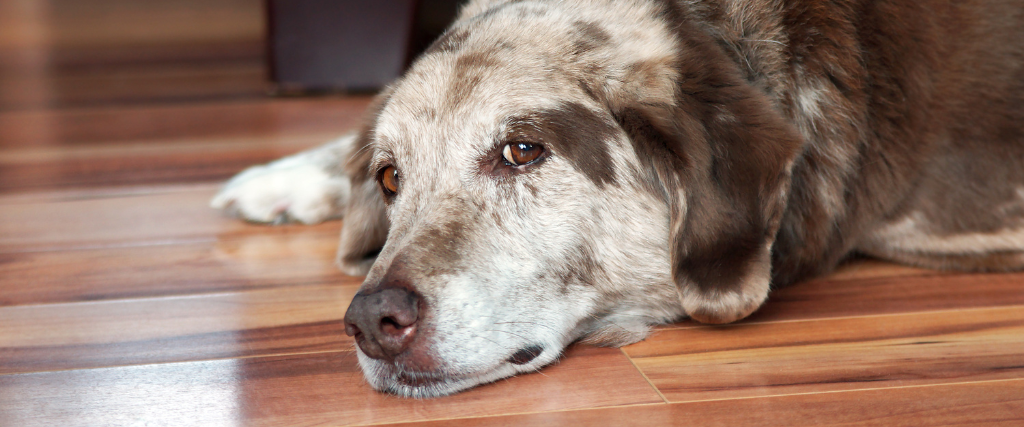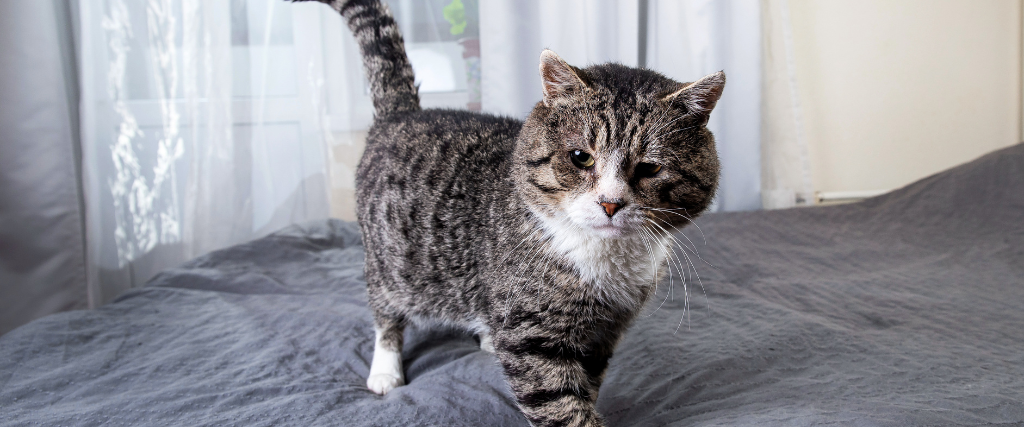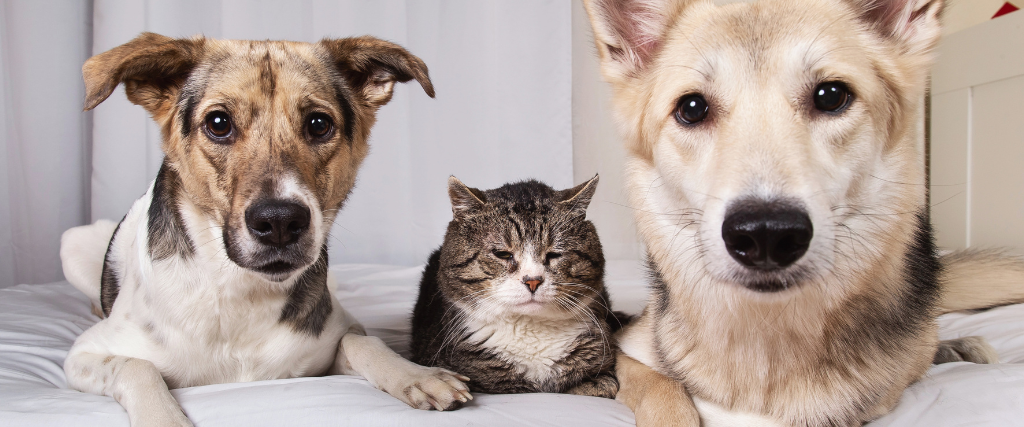As pets age, they experience a number of physical changes. Some of these changes may seem sudden such as hearing loss, and others are more subtle such as arthritic changes. The changes that you may see with your aging pet cannot always be cured, but they can often be managed to help your pet feel more comfortable and to improve their quality of life.
Noticeable Changes In Your Senior Pet
Nutrition
Just as with people, as pets age, their nutritional requirements change due to a decrease in metabolism and decrease in exercise. Most senior pets need their calories cut by about 20% without any change in exercise. Their energy requirements may decrease by another 10% with decreased exercise. It is important to monitor your pet’s weight as they get older. Increased weight makes it harder for older pets to move around and may lead to other health problems and a shorter life span. Speak with your veterinarian about the nutritional requirements and caloric intake that your senior pet may need.
Skin Toughening
Elbow callouses are another change commonly seen in dogs as they age. This is because they are not as active and spend more time laying about. The elbows are pressure points when a dog is laying down, and that is why callouses will form. Callouses form more commonly when a dog lays down primarily on hard surfaces. Make sure that your dog has a soft place to lay down on such as an orthopedic dog bed.

Coat Changes
You may notice as your pet ages that you will start seeing gray hair. This more common in dogs than in cats and is often seen on their face and muzzle more than any other part of the body. Dogs and cats can also start developing more skin tumors. These tumors can be benign or cancerous. It’s important to have new masses evaluated by your veterinarian to identify if they are cancerous or not, and to evaluate if they need to be removed.
Arthritis
Arthritis is a problem that most animals experience as they age. Owners make the mistake of thinking that their pet will cry or make other sounds of discomfort if they are painful. It is rare that an animal will do this. Signs of arthritis include not getting on and off of furniture anymore, difficulty getting into a car, not jumping onto things that they normally jumped on to, going up the stairs on a diagonal, limping, and muscle mass loss. With cats, you may find that they may be going to the bathroom outside of the litterbox. This can be a sign of arthritis pain, and that it is difficult for your cat to get in and out of the litterbox. You may want to try a different type of litterbox that may have lower sides, and ensure that your cat does not need to go up or down stairs to get to the litterbox. You should discuss arthritis with your veterinarian and decide which course of management works best to manage your pet’s pain.
Nail Care
Since senior pets are less active, another change that you may see is that your pet’s nails may become more brittle and become more prone to breaking. The best way to handle this is with frequent nail trimming. Nails will also get longer faster in senior pets because they are walking less and the nails do not get the natural wear and tear that they did when your animals were more active.
Bathroom Behaviors
You may see changes in bathroom habits as well with your senior pet. Dogs, especially female dogs, may start leaking urine while laying down. This problem can be managed with medications. You may also see fecal incontinence in both cats and dogs. This is typical since it is uncomfortable or even painful for senior pets to posture when defecating. As a result, they do it less frequently, which can lead to fecal incontinence; or in cats, defecation outside the litterbox. Cats tend to suffer from constipation more than dogs. If you notice less fecal material in the litterbox, or that the feces are very dry and hard, your pet may be suffering from constipation and some modifications in their diet or medication to help with this.

Hearing Loss
Hearing loss is a common problem that we notice in senior pets. Decreased hearing acuity seems like a sudden change even though the onset is typically slow. As owners, it appears sudden because we do not recognize hearing loss until it has advanced. Abnormal barking when you approach your pet may be an early sign of hearing loss. They will bark because they may not have heard you approaching, and you may have startled them. Another sign of hearing loss is when they do not listen to commands. There is no great way to test for hearing loss and it is not reversible, but using a flashlight for signaling your pet or vibrations (i.e. stomping your foot) are ways to try and communicate with them in the face of hearing loss.
Sight Changes
Eye changes are another thing we see in senior pets. Your pet should have their eyes checked at their annual exam. Owners will often notice a haziness in their pet’s eyes which may be cataracts, but can also be another eye condition called nuclear sclerosis which does not affect vision as cataracts do. Cataracts may occur with some underlying medical conditions, but lenticular changes are normal age-related changes in animals. Your veterinarian can differentiate between the two. Although we can never tell for sure how well an animal can see because they do not undergo an eye chart examination, we can tell if they are visual or not. If you notice your pet is running into things, this could be a sign that your pet may be having problems with their vision or they may be blind. If your pet has sudden blindness, contact your veterinarian immediately because there are many different diseases that can contribute to sudden blindness and some may be treatable.
These are just a few of the things that you may see as your pet ages. There are many health issues that can develop as your pet ages as well. It is important that your pet sees their veterinarian at least once a year, even if they seem healthy. Animals are masters of hiding health concerns until they become a big problem. Often if healthy problems are identified early, remedies may be implemented to make your pet more comfortable.
This blog was first seen on Sugar River Animal Hospital.

